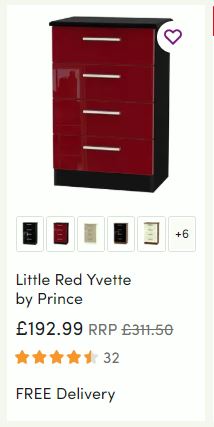Anyway – let’s imagine that I’m shopping around for a red chest of drawers.
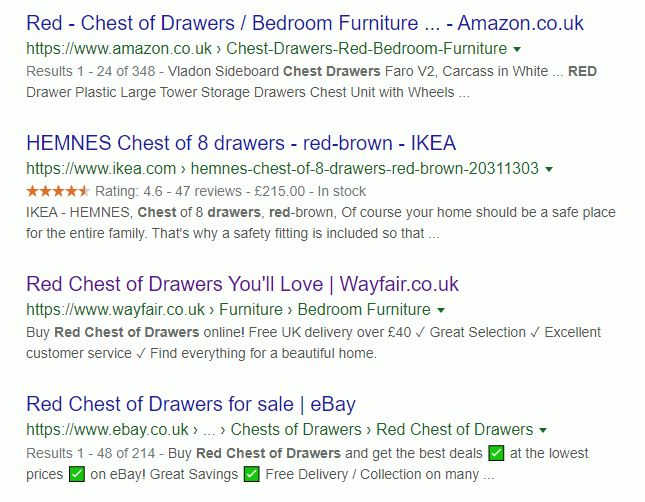
That takes us to wayfair’s ‘red chest of drawers’ page:
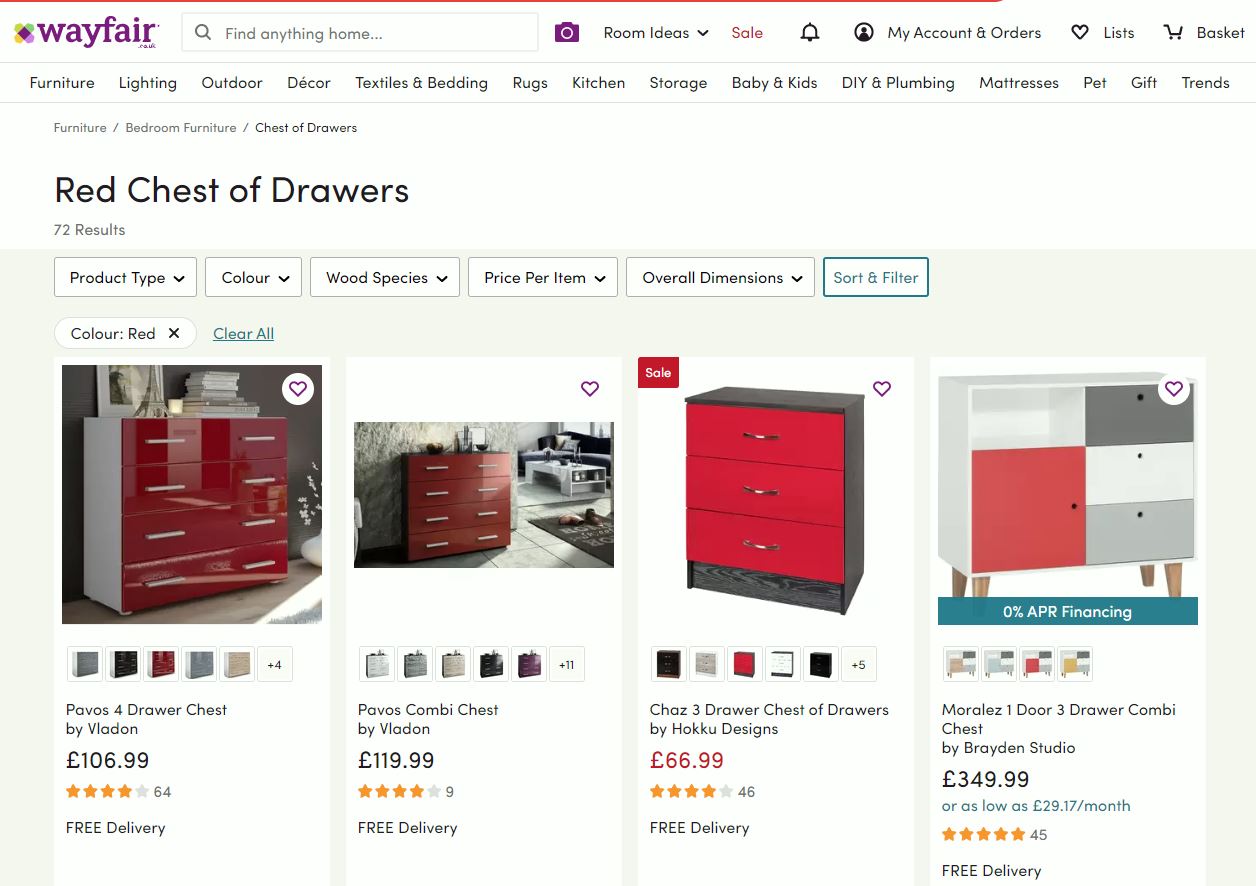
So far so good right?
Now let’s have a look at the data Wayfair records and shares with it’s marketing partners as soon as we hit that page.
14 trackers in all, including AppNexus,TradeDesk & Criteo: all programmatic advertising platforms; Doubleclick, Adwords & Remarketing from Google; Bing Ads; Digital Window, which is from Awin, an affiliate platform; and Facebook custom audiences, which is what we’re most interested in today.
Now, we haven’t clicked on a product yet, only visited a category page. Let’s have a closer look at what info the page is sending to my Facebook profile (you can read more techy stuff about how that happens here).
Let’s break that down:
The PageView event typically fires on all the main, public pages on a site – that sends data regarding the pages you’ve visited and basically lets Facebook know that you’ve been on the site and what you were checking out while you were there.
On this page, we also have a ViewCategory event.
That’s letting Facebook know that the category I’m viewing is ‘Chest Of Drawers’. That’s important because in the Facebook product catalogue, you can group your products by category, so if wayfair decides to retarget me on the strength of my visit to this category page, they can ensure that I only see products from that particular category, instead of armchairs and shelves that I have no interest in.
Okay, I’m going to click on the “Yvette 4 Drawer Chest” because it’s shiny.
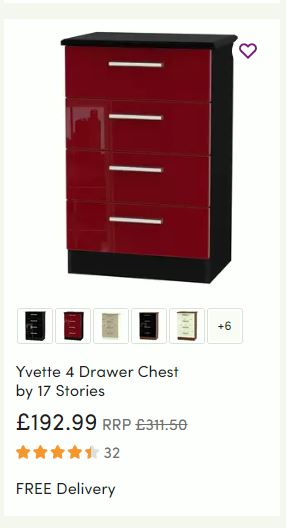
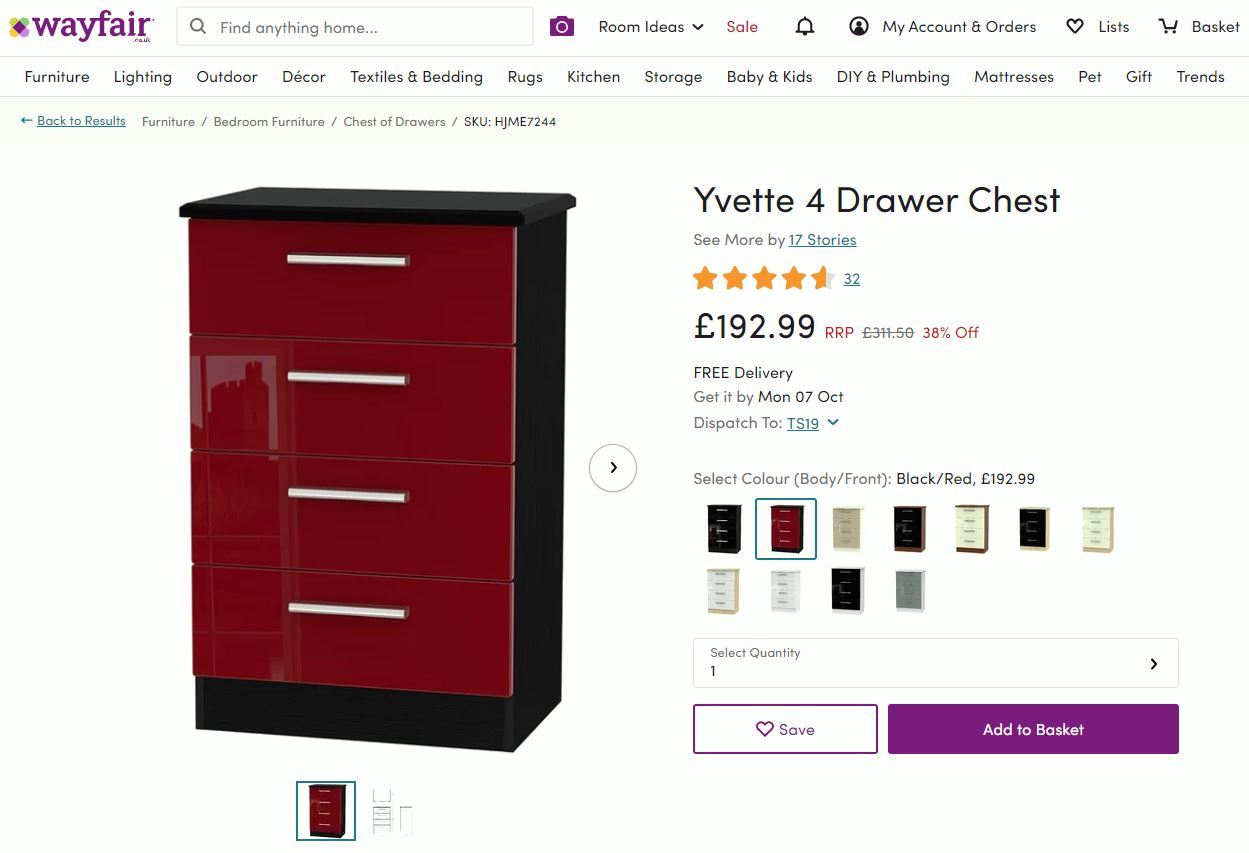
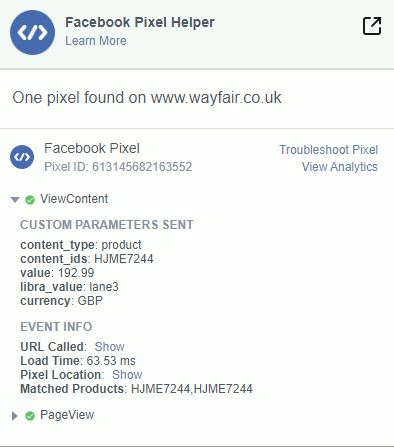
This is the ‘ViewContent’ event, which (on e-commerce sites) is typically set up to fire when someone visits a specific product page.
You can see that in the ‘Custom Parameters Sent’ section, that wayfair is telling Facebook I’ve viewed a product, which has the ID “HJME7244” (unique to that product), what price it is, and what currency I’m viewing it in.
The ‘libra_value’ is related to Facebook’s cryptocurrency, which we are definitely avoiding in this post!
In the event info section at the bottom, we can see that the product has been matched – meaning Facebook successfully matched it to a product with the same attributes in the wayfair Facebook catalogue – it’s available for retargeting ads.
Time for a quick nod towards funnels and segmentation here. Now I’ve actually visited a product page rather than only browsed a category, I’m a bit of a warmer prospect. I’ve shown a bit more engagement – not quite intent to purchase yet, but it certainly looks like I’m in the market for a chest of drawers.
Good retargeting campaign structures segment audiences by their proximity to conversion and provide ads relevant to their stage in the decision making process (as far as that can be estimated by their behaviour online).

Sorry. Let’s Add To Cart.

In it goes:
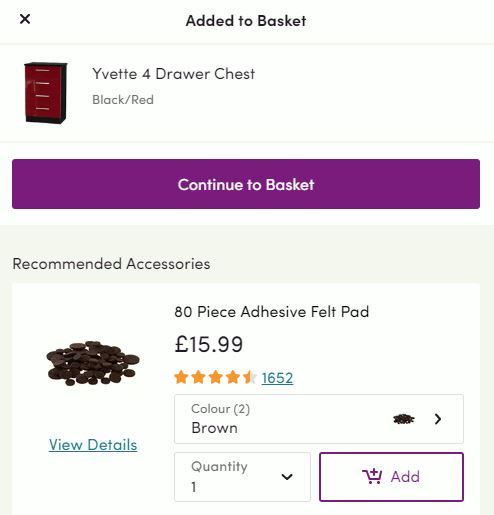
And a new Facebook event is fired:
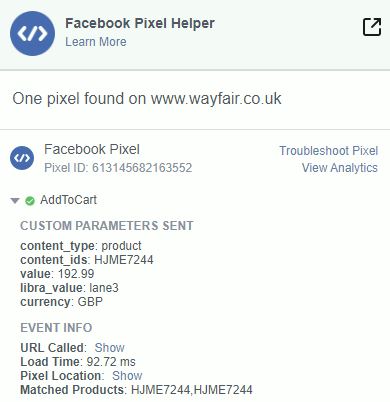
So I’ve now added the product to my cart – that’s a pretty strong buying signal, but then again, a lot of people use add to cart to create a shortlist while browsing, so it’s not quite “initiate checkout” stage intent to purchase yet, but getting close.
Additionally, I’m not actually going to purchase the chest of drawers, because:
a. I want to be retargeted and there’s not much point in retargeting someone who just purchased the product (unless you’re cross selling, which is for another day), and…
b. I don’t need a chest of drawers.
I’ve visited a category page, visited a product page and added the product to my cart.
Wayfair can now choose to retarget me using the data and Facebook events information that was recorded during my visit to the site. They know the category I was interested in, the product I investigated, and how close I was to purchasing (added to cart, but didn’t purchase).
Time to go and browse Facebook for a while…
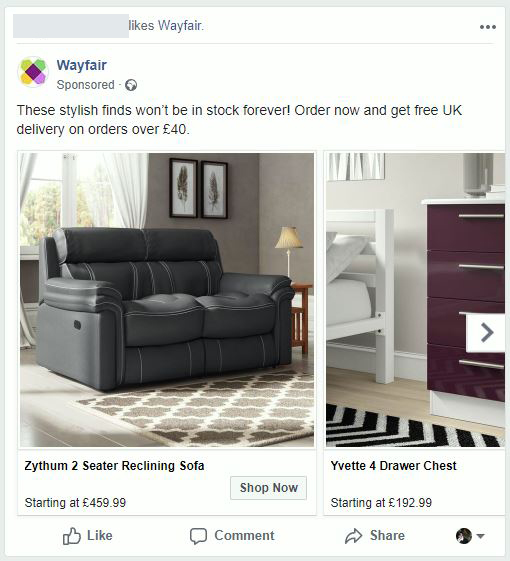
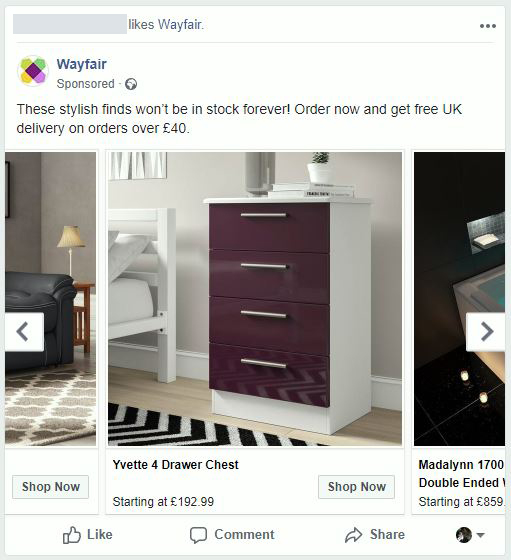
You can see the Yvette chest of drawers is the 2nd product in my ad. Not entirely sure why the sofa is there, but the Facebook pixel works across devices, so it’s possible my wife was checking out sofas on my phone at some point (or wayfair need to work on their product feed categorisation a little).
It’s not the red one either – (which could be fixed with more granular categorisation and colour information in the feed), but still, it’s the product I was checking out, but didn’t buy 10 minutes earlier.
They may decide to target me for a couple of days or a week (or even up to 180 days after I’ve been on the site) – that depends on how hot a prospect they consider me to be based on my behaviour.
As you can see, you can only do this with a properly configured Facebook pixel, feed and catalogue. The right events need to fire in the right places, and they need to pass the correct data, or else it just won’t work.
Thanks for reading!
